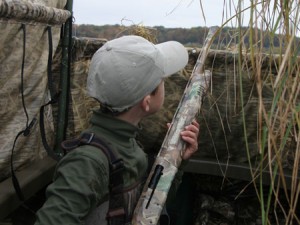
2011 National Survey of Fishing, Hunting, and Wildlife-Associated Recreation Final Report Released
Wildlife-related outdoor recreation increased dramatically from 2006 to 2011. The national details are shown in the final report (Final Report) of the 2011 National Survey of Fishing, Hunting, and Wildlife-Associated Recreation released today by the U.S. Fish and Wildlife Service (Service). The Final Report, which follows the August 2012 Preliminary Review and the September 2012 State Overview, provides more information on the types of activities and money spent for fishing, hunting, and wildlife watching.
Highlights of the Final Report include:
- More than 90 million U.S. residents 16 years old and older participated in some form of wildlife-related recreation in 2011; that is up 3 percent from five years earlier. The increase was primarily among those who fished and hunted.
- Wildlife recreationists spent $144.7 billion in 2011 on their activities, which equated to 1 percent of the Gross Domestic Product. Of the total amount spent, $49.5 billion was trip-related, $70.4 billion was spent on equipment, and $24.8 billion was spent on other items such as licenses and land leasing and ownership.
- The number of sportspersons rose from 33.9 million in 2006 to 37.4 million in 2011. The data show that 33.1 million people fished, 13.7 million hunted, and 71.8 million participated in at least one type of wildlife-watching activity such as observing, feeding and photographing wildlife.
Other key findings include:
Fishing and Hunting
- Of the 13.7 million hunters that took to the field in 2011, 11.6 million hunted big game, 4.5 million hunted small game, 2.6 million hunted migratory birds, and 2.2 million other animals.
- Of the 33.1 million anglers that fished, 27.5 million freshwater fished and 8.9 million saltwater fished.
- While 94% of the U.S. population 16 years of age and older resided in metropolitan areas (50,000 and over populations), 89% of all anglers and 80% of all hunters were metropolitan residents.
- 73% (24.2 million) of all anglers were male and 27% (8.9 million) were female. 89% (12.2 million) of all hunters were males and 11% (1.5 million) were females.
Wildlife Watching Highlights
- 71.8 million U.S. residents observed, fed, and/or photographed birds and other wildlife in 2011. Almost 68.6 million people wildlife watched around their homes, and 22.5 million people took trips of at least one mile from home to primarily wildlife watch.
- Of the 46.7 million people who observed wild birds, 88% did so around their homes and 38% on trips a mile or more from home.
- Other types of wildlife also were popular for trip takers: 13.7 million people enjoyed watching land mammals such as bear, squirrel, and buffalo. 4 million people watched marine mammals such as whales and dolphins; 6.4 million enjoyed watching fish; and 10.1 million enjoyed watching other wildlife such as butterflies.
- People spent $54.9 billion on their wildlife-watching trips, equipment, and other items in 2011. This amounted to $981 on average per spender for the year.
At the request of state fish and wildlife agencies, the Fish and Wildlife Service has been sponsoring the national survey every five years since 1955. It is viewed as one of the nation’s most important wildlife-related recreation databases and the definitive source of information concerning participation and purchases associated with hunting, fishing and other forms of wildlife-related recreation nationwide.
The U.S. Census Bureau selected over 48,600 households across the country to obtain samples of sportspersons and wildlife watchers for detailed interviews. Information was collected through computer-assisted telephone and in-person interviews. Starting in December 2012 through May 2013, the State reports will be prepared for release on a rolling basis. The survey is funded by Multi-State Conservation grants under the Wildlife and Sport Fish Restoration Programs which celebrates 75 years of conservation success in 2012.
The mission of the U.S. Fish and Wildlife Service is working with others to conserve, protect, and enhance fish, wildlife, plants, and their habitats for the continuing benefit of the American people. We are both a leader and trusted partner in fish and wildlife conservation, known for our scientific excellence, stewardship of lands and natural resources, dedicated professionals, and commitment to public service. For more information on our work and the people who make it happen, visit www.fws.gov. Connect with our Facebook page at www.facebook.com/usfws, follow our tweets at www.twitter.com/usfwshq, watch our YouTube Channel at http://www.youtube.com/usfws and download photos from our Flickr page at http://www.flickr.com/photos/usfwshq





